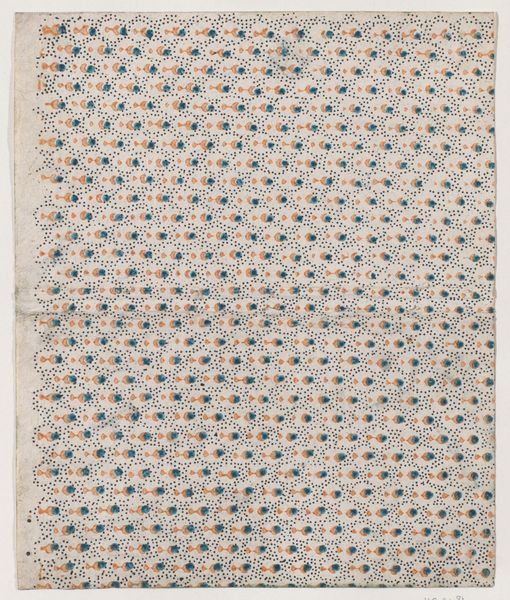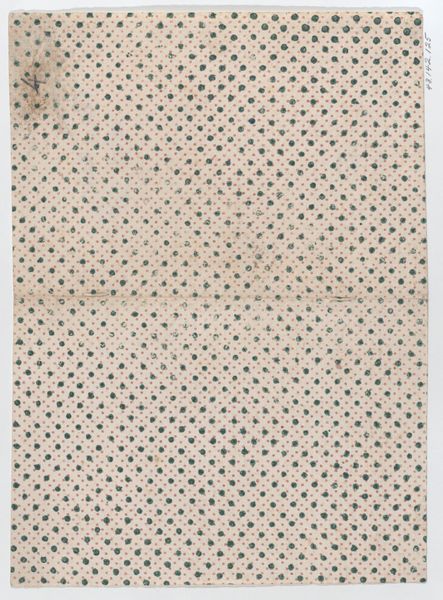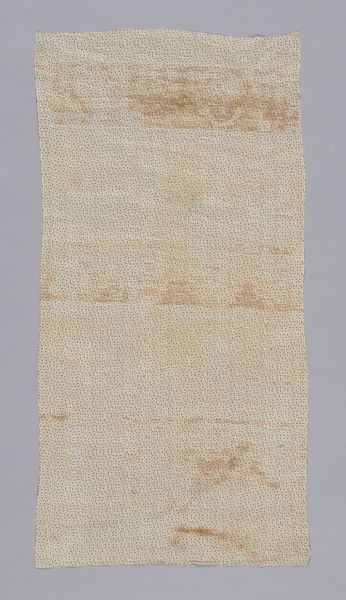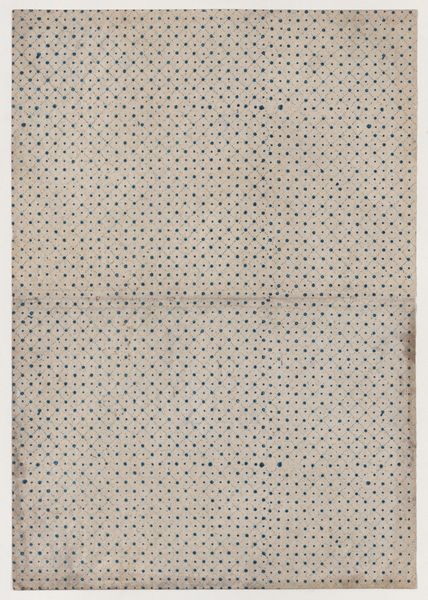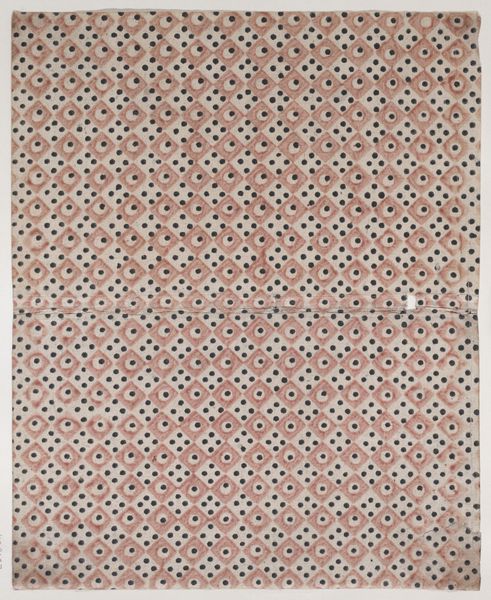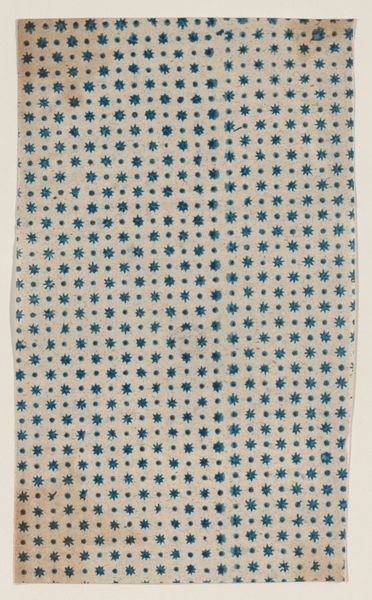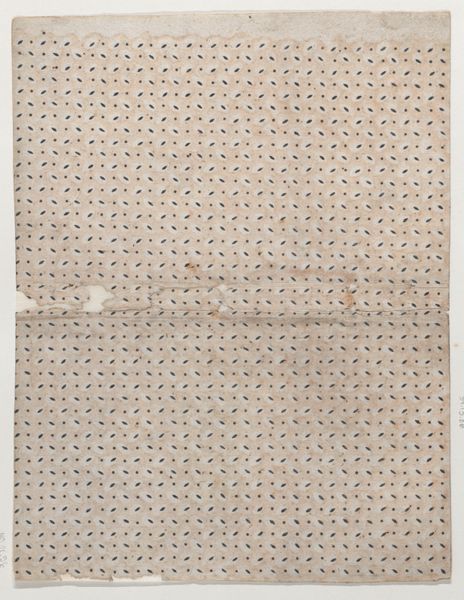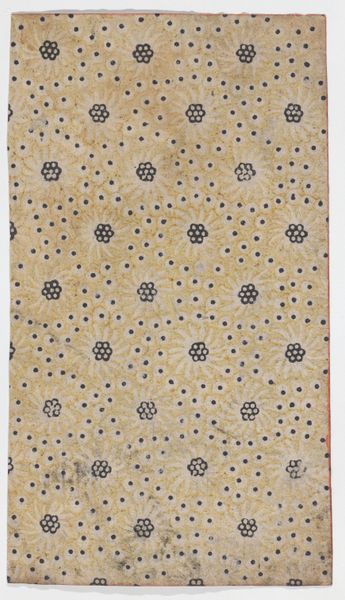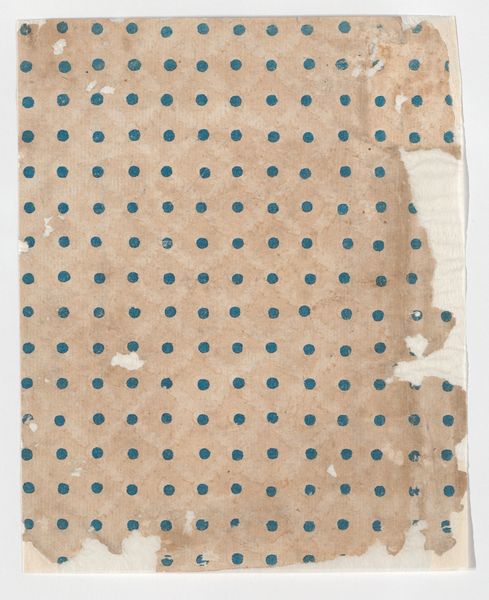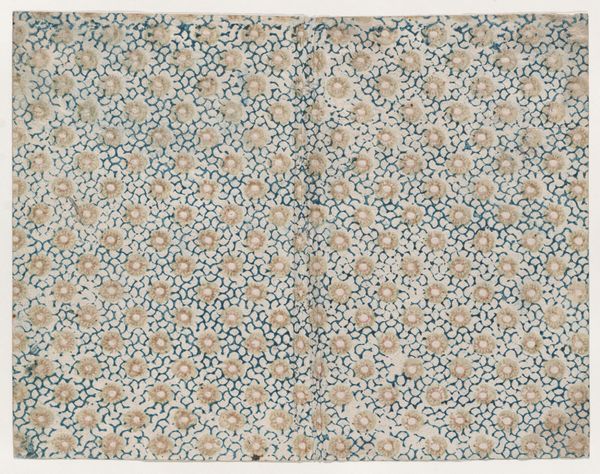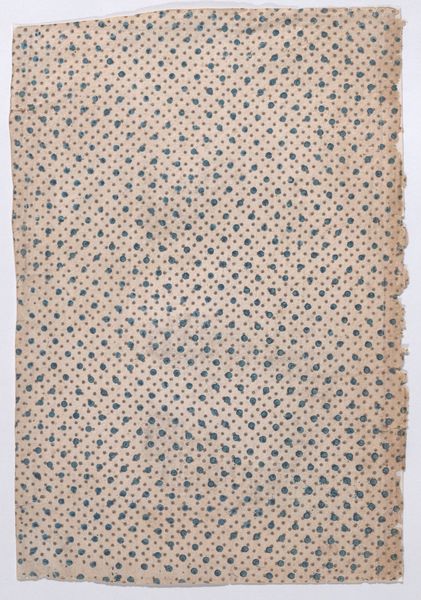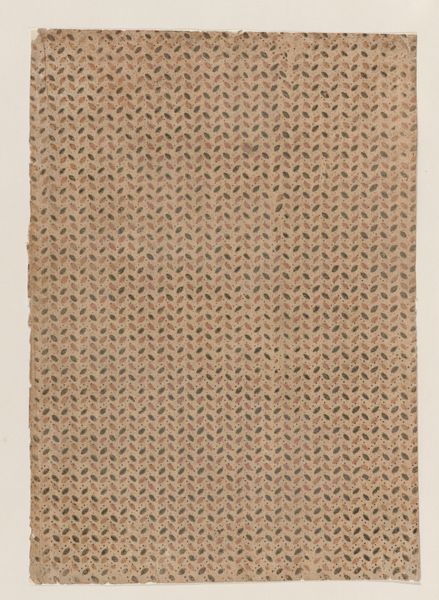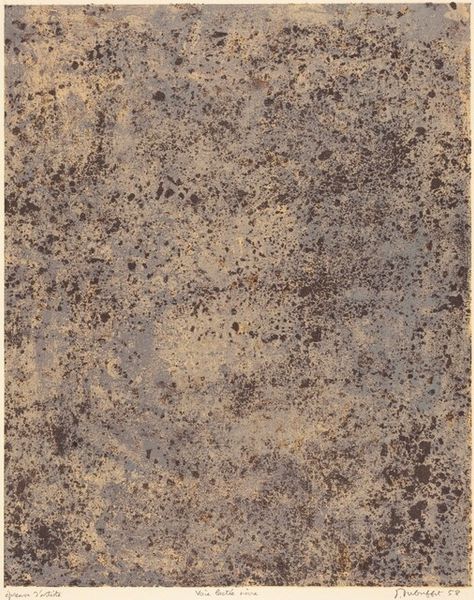
drawing, print, textile
#
drawing
#
natural stone pattern
# print
#
pattern
#
textile
#
geometric pattern
#
repetitive shape and pattern
#
organic pattern
#
geometric
#
repetition of pattern
#
vertical pattern
#
pattern repetition
#
textile design
#
imprinted textile
#
layered pattern
Dimensions: Sheet: 7 3/4 × 13 1/4 in. (19.7 × 33.6 cm)
Copyright: Public Domain
Curator: This drawing, believed to have been produced sometime between 1800 and 1900, is entitled "Book cover with overall abstract design." It currently resides in the Metropolitan Museum of Art. Editor: The first thing that strikes me is how quiet it is, despite the repetitive shapes. It’s like a whisper of a pattern. I see scattered crescent shapes among a field of tiny dots, almost like a rain of seeds. Curator: The use of repetitive, geometric, and even organic patterns really situate it in a fascinating time for design. The period saw an explosion of interest in textile designs, and the industrial revolution democratized book production to a certain extent, expanding literacy and popular culture. Editor: I’m wondering about the cultural implications of repeated patterns, specifically. I am curious if these motifs resonated differently depending on social class or gender. How might someone who creates or uses such patterns perceive the book? Curator: That's an insightful consideration. Printed matter, including textiles and book covers like this one, played a key role in constructing social identity and circulating cultural values. Access and reception depended heavily on the reader’s position within complex power dynamics. Editor: I notice the handmade quality within the repetition. Were designs like this initially intended to empower through design, as modes of asserting identity for both maker and owner in a rapidly changing world? Curator: What do you mean, "empower"? These designs, particularly for a book cover, played an undeniable part in marketing cultural production for consumption by others. The pattern evokes stability, structure, repetition. They reinforced social structures just as often as they contested them. Editor: But is it possible the textile offers a lens through which to see broader issues of social inequity and identity? These items, used so intimately, must possess stories of marginality and resistance, too. The imperfection of a hand-drawn geometric suggests dissent. Curator: Perhaps, but to elevate what is primarily decoration on a book cover as an object of overt resistance would be a stretch without stronger contextual evidence. Its meaning shifted based on ownership and display, so interpreting it today can be an exercise in filling in a missing background. Editor: It does provide insight into a complex time in our cultural evolution, particularly around how knowledge and identity were packaged and distributed. Curator: And it highlights the fascinating convergence of design, production, and readership. Editor: I agree. Examining its form opens a world of dialogue with that world.
Comments
No comments
Be the first to comment and join the conversation on the ultimate creative platform.
